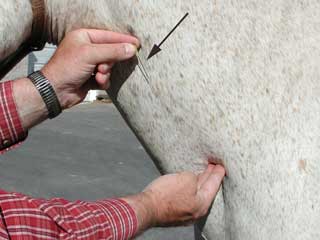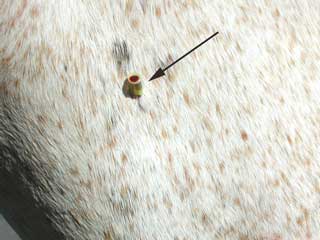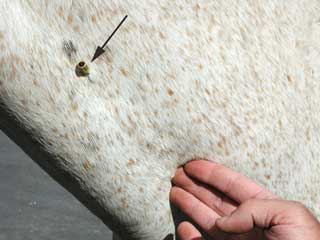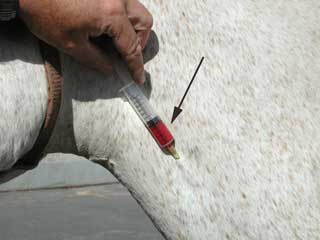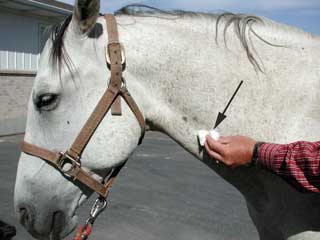
| The jugular vein in the neck region of a horse is the best place to administer IV injections or collect a blood sample. First, clean the jugular furrow of the neck with a piece of cotton or gauze pad soaked in alcohol (black arrow). This will sanitize the area and make the vein easier to see. |
